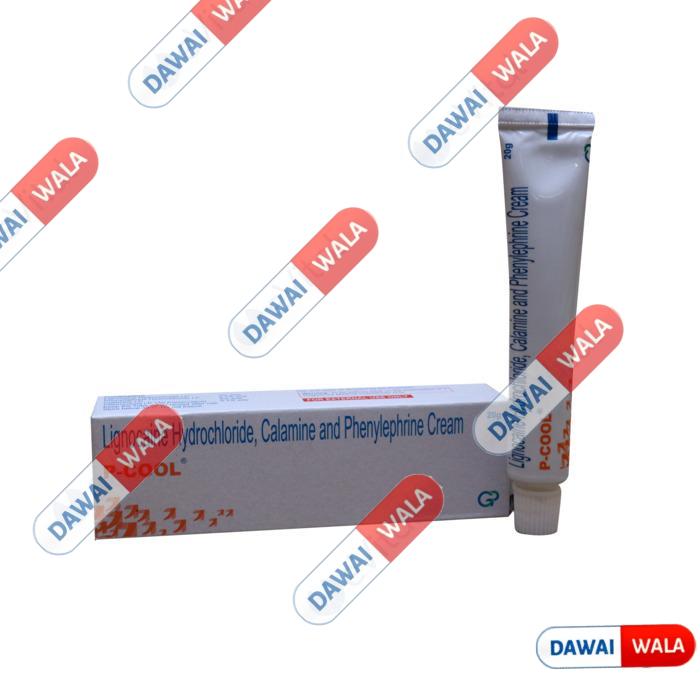Description of P Cool Cream
P Cool Cream is a combination medication used to manage pain and bleeding associated with fissures and haemorrhoids (piles). It contains the active ingredients calamine, lignocaine (lidocaine) hydrochloride, and phenylephrine hydrochloride, and works by reducing inflammation, relieving pain, and stopping bleeding. Calamine has mild astringent and antipruritic actions . Lignocaine is a local anaesthetic that works by blocking pain signals from the nerves. Phenylephrine is a vasoconstrictor that narrows blood vessels, reducing swelling and stopping bleeding.
Key Ingredients:
- Lignocaine Hydrochloride I.P., Phenylephrine Hydrochloride I.P., Calamine I.P., Chloracresol I.P.
Key Benefits:
- P Cool Cream contains a local anaesthetic, lignocaine, which helps to reduce pain and discomfort associated with anal fissures and haemorrhoids
- The active ingredient calamine in P Cool Cream has mild astringent and antipruritic actions that can help to reduce inflammation and itching
- Phenylephrine hydrochloride in P Cool Cream is a vasoconstrictor that narrows blood vessels, reducing the risk of bleeding
- P Cool Cream is specifically designed to manage pain and bleeding associated with anal fissures and haemorrhoids, providing effective relief for these conditions
Good to Know:
Symptoms of haemorrhoids can include pain, itching, bleeding during bowel movements, and discomfort in the anal area.
Concerns It Can Help With:
Product Form: Cream
Directions for Use:
Use as directed by a healthcare professional
Safety Information:
- Read the label carefully before use
- Keep out of the reach of children
- Store in a cool and dry place
- Keep the tube tightly closed after use
Quick Tips:
Eat a high-fibre diet to soften stool and reduce constipation, which can aggravate piles and fissures.
Frequently Asked Questions:
Q. What are piles (haemorrhoids) and fissures?
Piles are swollen veins in the anal canal, while fissures are tears in the anal lining.
Q. What causes piles and fissures?
Piles and fissures can be caused by straining during bowel movements, chronic constipation or diarrhoea, pregnancy, obesity, and a sedentary lifestyle.

